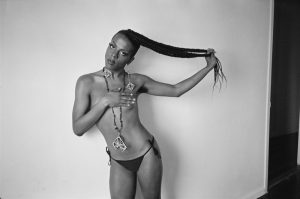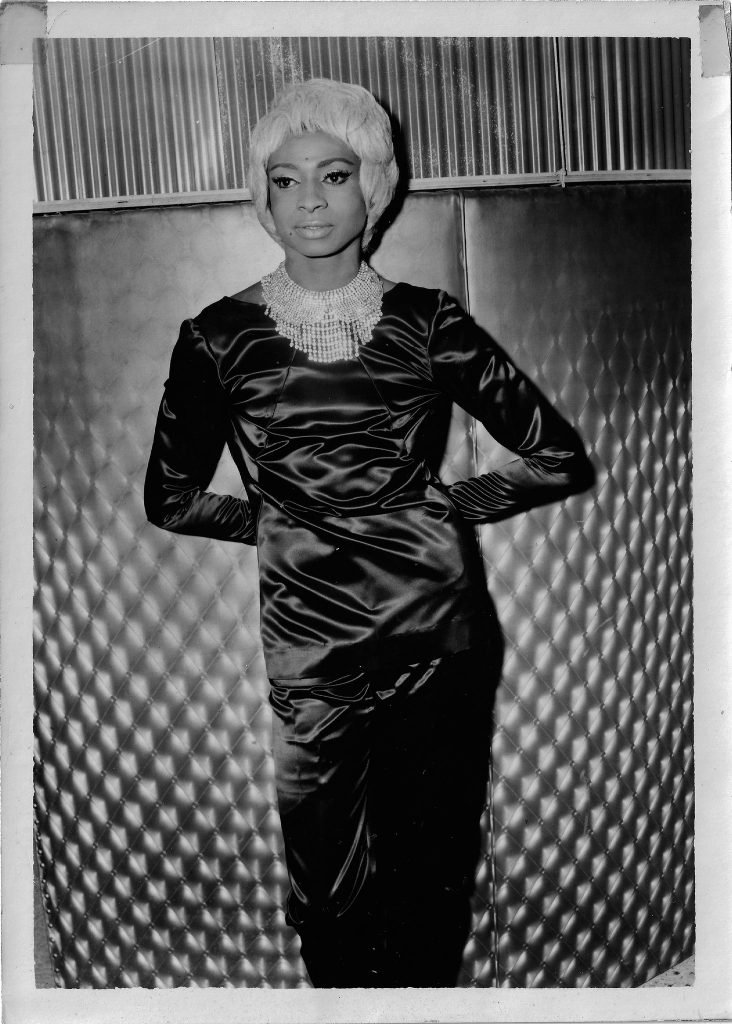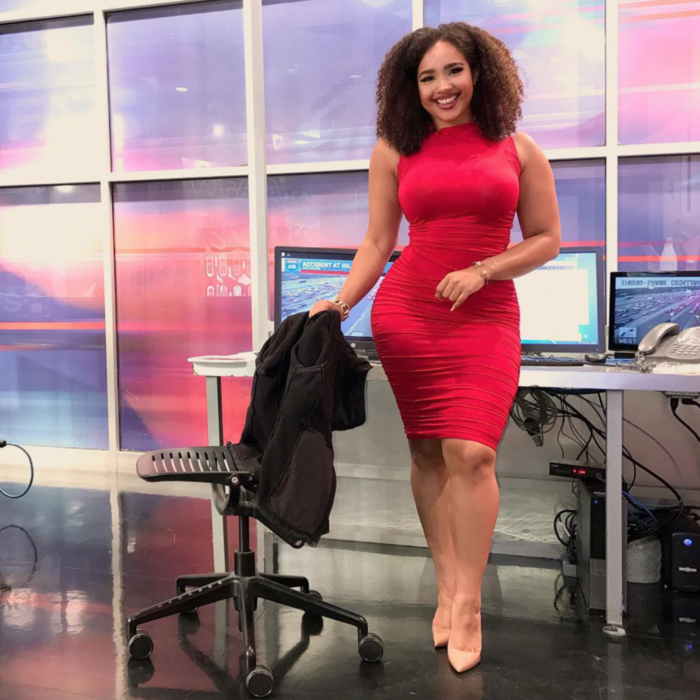Dina’s Diner, November 20, 2017
ONE PLUS ONE EQUALS MANY POSSIBILITIES
The New York Times Arts and Leisure section had an article about an art exhibit featuring gender fluid artists in the September 17, 2017 edition. The exhibition at the New Museum of Contemporary Art in Manhattan is titled, “Trigger: Gender as a Tool and a Weapon.”
The Times article said, “It is the largest show to date at a major museum to tackle gender fluidity, which has become native to young people who are used to constructing their own identities on social media and declaring their preferred personal pronouns on college campuses and at workplaces. [It] brings a new level of visibility to gender-fluid artists who have only been acknowledged before in a trickle of mainstream shows.”
The Times described some of the exhibits: “Sadie Benning’s lush new series of photographs titled “rainy day/gender,” for instance, are portraits shot through droplets on a windshield in a way that makes peoples’ bodies appear surreal and almost incomprehensible. [Transgender] performance artist Justin Vivian Bond plans to periodically strike a pose in a pink gown with rhinestone teardrop, framed by hand-drawn wallpaper twinning the artist’s face with that of the former Estée Lauder model Karen Graham. As a closeted transgender teenager in the 1970s, Bond obsessively drew Ms. Graham, until “I made myself my canvas.” The artist is wearing a vintage dress by Frank Masandrea, one of several little-known couturiers who outfitted Ms. Graham before AIDS cut them down in their creative prime.”
The exhibit is also an acknowledgement that gay and transgender people have been a part of the art and fashion scene for decades and their contributions went unsung by the affluent consumers of their work. “About half the artists are nonwhite. Most identify as queer — the term for nonconforming sexual identity that includes lesbian, gay, bisexual and transgender people. And some, like the filmmaker Wu Tsang, reject the gender spectrum altogether.”
A couple of the artists were skeptical about the effectiveness of the exhibit. “Of course it is important to tell people’s stories, but who is actually benefiting by projecting a film in a museum and what is this discourse actually doing for communities at stake?” wondered Carlos Motta, an artist who is showing in the exhibit. Juliana Huxtable who photographs her nude transgender body for the exhibit wondered, “Or are they putting me on display as a circus freak show? That’s the anxiety that I’ve gotten from the whole situation, because I think that the policing and the violence against trans people have a direct relationship to that increase in visibility.”
Johanna Burton, the curator of the show, told The Times, “If the show is done right, and I hope it is, it makes people interested but doesn’t allow them to think they fully understand something,” she said. “If you stop thinking about yourself as a stable identity looking at something made by another stable identity, at least for the duration of the show, it changes the whole game. And some people won’t like that.”
BEFORE THERE WAS A NAME FOR IT
The New York Times Arts section had an article about singer Jackie Shane in the October 16, 2017 edition. Jackie Shane, whom I had never heard of before, was a soul singer in the 1950s and 1960s before disappearing from the public eye in 1971.
Jackie Shane was an early transgender performer, born a man in Nashville, Tennessee, who emigrated to Canada where she became a popular singer in female presentation. The Times article said, “Though she said she self-identified as a woman in a man’s body by the time she was 13, Ms. Shane occasionally described herself to peers as gay — several decades before the movement for transgender rights altered the discourse around gender and sexuality. Throughout her career, she was referred to publicly as a man. “I was just being me,” she said. “I never tried to explain myself to anyone — they never explained themselves to me.”
The Times said that the “the fledgling state of Canada’s music industry at the time and her own distrust of record labels” kept Jackie from a wider audience, including back in the United States. Then in 1971, Jackie suddenly left her career behind to care for her mother in Los Angeles. Although living in the heart of the entertainment industry, she apparently never pursued her career again. After her mother’s death in 1997, she moved back to her hometown of Nashville where she lives as a recluse. A record company specializing in vintage music sought her out to re-release her catalog of music. She agreed and The Times article was a first re-introduction to the public eye.
She told The Times that she had been the victim of unwanted advances as a young transgender person, even from family members. When The Times asked her about recent advances in gay and transgender rights, including marriage, she said, “We should have been able to do it from the beginning. We’ve had to fight for everything that should have already been on the table.”
THE GODMOTHER OF THE SELFIE
The New York Times Arts section had an article about the photographer Cindy Sherman in the August 7, 2017 edition. Cindy Sherman became famous as the photographer of careful set pieces with herself as the subject disguised as a character in the photos. Her exhibit “Untitled Film Stills” and other alter-ego self portraiture are famous and unique despite the thousands of photographs, outright imitations, homages, and the selfie revolution in the 30-plus years since she began.
The Times article was prompted by Ms. Sherman opening her Instagram account to public view. Until this summer, she had avoided social media for her work. Besides the widespread use of Instagram by the public at large, it is — according to The Times — the main place where artists display and view each other’s work online. As one of the most famous photographers in the art world, her Instagram account became a big deal as witness The Times‘ interest.
Ms. Sherman’s Instagram self-portraits are all distorted in some way. The Times points out the irony of her using some of the available photo editing apps that are designed to make people appear better rather than worse in their pictures. She has adjusted the size and shape of her eyes, the color and texture of her skin, and some of the postings look painted rather than photographed.
Crossdressers — even more-so than celebrities — must be the group that takes selfies more than any other. Usually they are simple photos of the dresses, lingerie, or other outfits they wish to show off. Only occasionally will the photo have a theme or props to set the scene in a particular manner as Cindy Sherman did to such great effect in her “Film Stills” photos. I doubt we’ll see any crossdressers purposely distorting their faces to appear older or more bizarre (than some already do). But maybe a little inspiration from Cindy’s works can elevate the crossdressing photo game beyond the typical French Maid with a feather duster or the Catholic schoolgirl in bondage.
IN THE FORM OF A QUESTION
I am a Jeopardy fan and watch it almost daily. One of the fun aspects of the show is the occasional female contestant who embodies the ideal of beauty and brains. Apparently, I am in good company because the internet is filled with comments of guys fanboying their Jeopardy crushes.
The most recent female contestant that seemed to make hearts melt was Kirstin Cutts. Kirstin was a multiple day winner and had a quirky way of smiling at the camera during introductions and the Final Jeopardy silent interludes that was uniquely appealing. Her admirers have called her “adorkable” and “too cute for Jeopardy.” There are several online paeans to her combination of smarts, natural flirtiness and beauty. One commenter said that “Kirstin Cutts may well bring this country together” presumably in unanimous crushdom. Sadly, this has not happened. Well, the crushing on Kirstin may be happening but the unification thus far has fallen short.
Some of the contestants also drew attention because of their, uh, proportions. A contestant named Liz Fritz seems to have gotten the most attention for her bosom but others are still remembered forever online. Ariel Schneider, who appeared in 2010, inspired this post header, “Girl on Jeopardy has some nice boobs.” Maybe not what a young molecular biologist wishes to be remembered for. Since contestants are generally only visible from the chest up, the focus on faces and boobs is a little understandable. By the way, some male contestants also received admiration online though perhaps not as exclamatory as the distaff competitors.
Since this column is ostensibly about crossdressing and transgender issues, this last bit will fulfill the quota, I hope. Jeopardy has also had at least two trans contestants on the show. Fran Fried, whom appeared recently in October 2017 and Kaya Chua from 2015 are past competitors who identified as trans. The only other trans game show contestant I could find was Natalie Dressler who appeared on a game show called Divided earlier this year.
CHECKING ALL THE BOXES
The name Demetria Obilor will go down in Diner history. I saw several online articles about Demetria on November 4, 2017. Ms. Obilor is an on-air traffic reporter for WFAA-TV in Dallas, Texas and she was criticized on Twitter by a viewer for her fashion choices. The comment read as follows: “Has anyone seen Channel 8’s new morning traffic reporter? Her name is Demetria Obilor and she’s a size 16/18 woman in a size six dress and she looks ridiculous. I understand that when I watch Channel 8 I’m going to get biased reporting and political correctness, but clearly they have taken leave of their senses. I’m not going to watch Channel 8 anymore.”
That tweet set off a backlash against the latest example of “body-shaming” that led the critic to delete the Twitter post and probably wish to crawl into a safe place until it all blew over. That viewer’s words pointed up not just the disdain she had for Demetria’s fashion choices but a seeming fear of seeing a size 16 woman confident in her own skin succeeding in the public eye. It flew in the face of the budding “body positive” movement that supports larger women and encourages them to dress as they want regardless of traditional restraints.
Most crossdressers are in the “plus” size category if only because of our larger frames. But to look at a woman like Demetria Obilor is to recognize the difference between the female shape and the male shape. Even if a biological male can squeeze into a form fitting female sheath dress, it won’t have quite the impact of a well-built genetic female. And that is where cosmetics and accessories and even personal posture and grace come in to fill in the gaps that evolution has left between the sexes.
But let’s get back to Demetria herself. The moment I saw her, I immediately liked her style and looks. In fact, Demetria Obilor hits the proverbial home run for me: zaftig and buxom body, form fitting fashions, voluminous Afro hair-do, and television newswoman. A four-bagger of different topics I wrote about in recent Diners. I guess physical attraction is the most personal of all personal thoughts and feelings. In a choice between some waifish supermodel and Demetria Obilor, I will always be in Demetria’s corner.
Moved to comment? Login in here and use the comment area below.
Category: Transgender Fun & Entertainment, Transgender Opinion

















